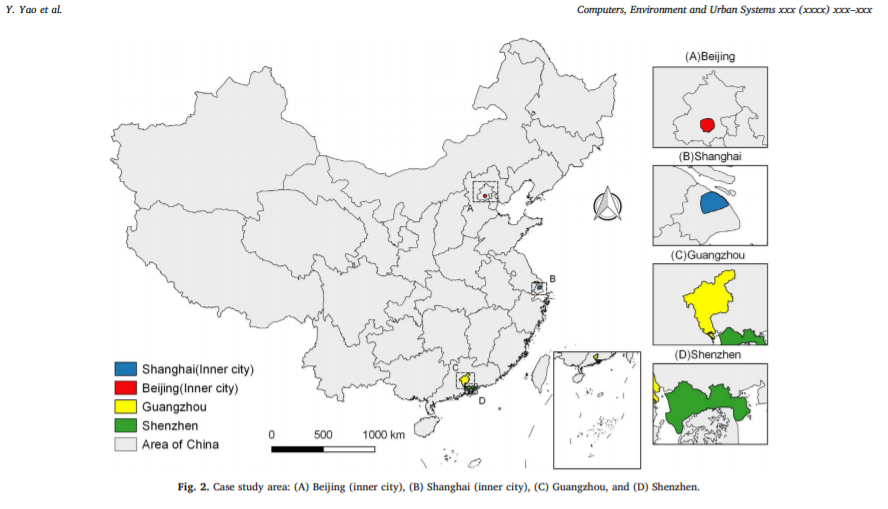Abstract
According to an urban planning directive issued by the Chinese Central Government in early 2016, the Community Opening Policy will be put on the agenda to ameliorate transportation networks, which has aroused much attention regarding the coming changes in traffic, especially in road network structures. Nevertheless, few studies were concerned with the direct and indirect impacts of opening gated communities. This study aims to analyze the impact of opening gated communities on road structure by integrating ant colony optimization (ACO) and complex graph theory and to investigate its influence on resident commuting efficiency and the traffic flow centroid. First, with a traffic road network based on OpenStreetMap (OSM), alteration in the connectivity between two road nodes and the resident overall commuting time and distance are computed using an ACO algorithm. Second, using complex graph theory, the attraction index of every road is calculated, and the congestion area before and after the opening policy is obtained. The research areas include Beijing, Shanghai, Guangzhou, and Shenzhen, which are first-tier Chinese cities. The results demonstrate that opening gated communities will increase the connectivity and accessibility of the current road network by 9.43-29.80%, generating a decrease of 2.57-4.50% in resident commuting time for short-distance travel. Furthermore, with the decline in traffic stream in the urban trunk roads, the number of potentially congested junctions will decrease, resulting in an alteration in the spatial position and coverage area of the urban congestion areas. This study carried out quantitative research into the effect of opening gated communities, providing a reference for urban planners and government.

Q.E.D.









